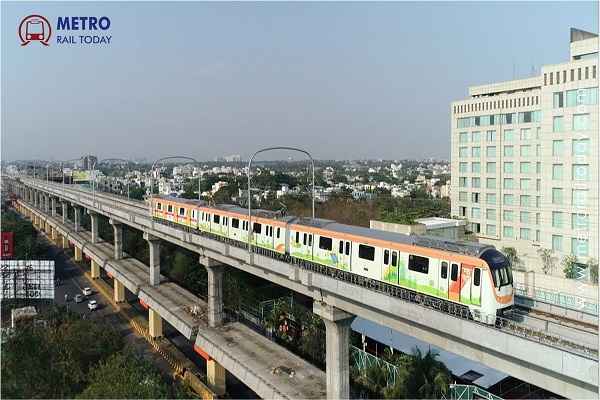 EIB approves €289.5 million loan for expansion of Nagpur and Pune Metro Rail Projects
EIB approves €289.5 million loan for expansion of Nagpur and Pune Metro Rail Projects India is building Largest Railway Station in Amaravati - Know all about
India is building Largest Railway Station in Amaravati - Know all about Kineco and BEML forge strategic partnership to strengthen indigenous composite manufacturing
Kineco and BEML forge strategic partnership to strengthen indigenous composite manufacturing UN blacklists Spanish Trainmaker CAF over activities in Occupied Palestinian Territories
UN blacklists Spanish Trainmaker CAF over activities in Occupied Palestinian Territories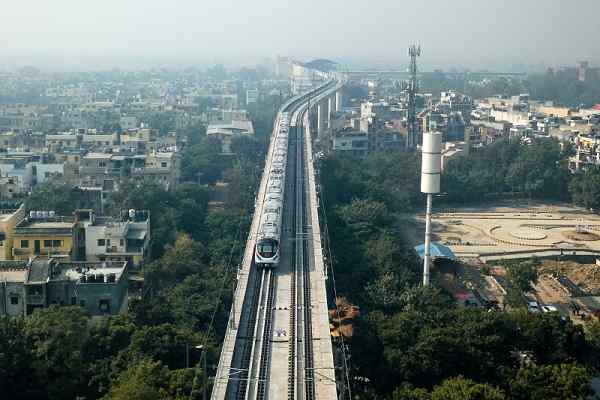 Prayagraj to get full-fledged Metro System, replacing the Metrolite Plan
Prayagraj to get full-fledged Metro System, replacing the Metrolite Plan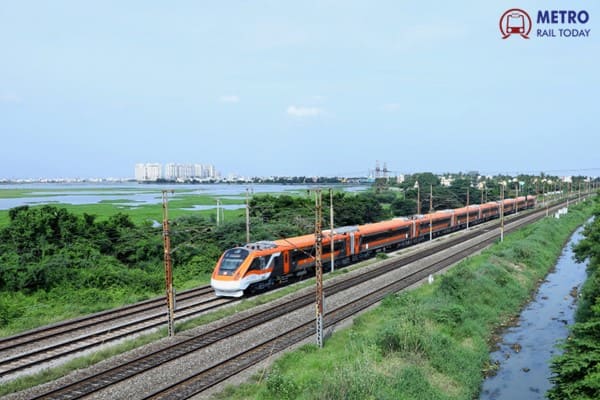 Sensonic & Skylark Drones Join Hands to Revolutionize Rail Infrastructure Monitoring
Sensonic & Skylark Drones Join Hands to Revolutionize Rail Infrastructure Monitoring Namo Bharat: Driving India’s Transit Revolution with Sustainability and Seamless Connectivity
Namo Bharat: Driving India’s Transit Revolution with Sustainability and Seamless Connectivity RVNL - The Silent Engine Driving India’s Rail Infrastructure Boom
RVNL - The Silent Engine Driving India’s Rail Infrastructure Boom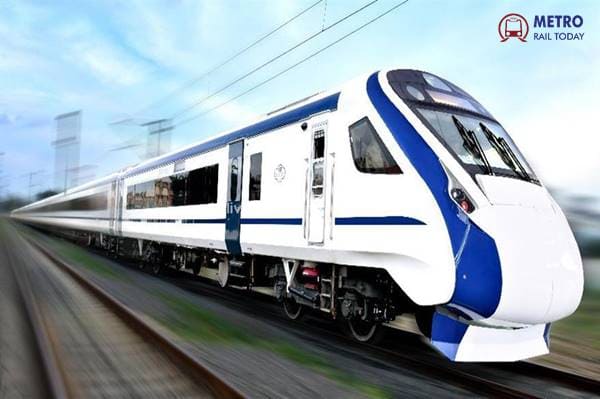 India to introduce 800 Vande Bharat Trains to redefine the future of Indian Railways by 2030
India to introduce 800 Vande Bharat Trains to redefine the future of Indian Railways by 2030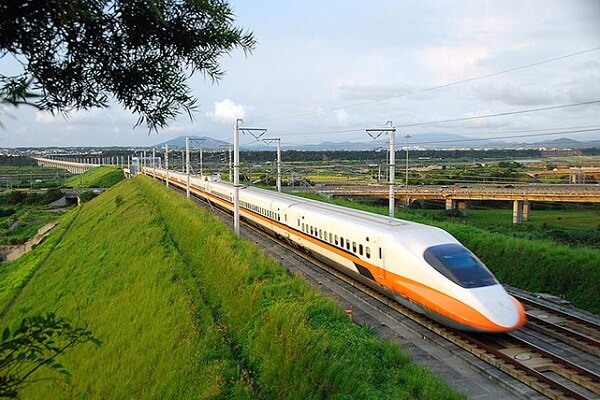 Indian Railways to develop 7,000 km of dedicated Passenger Corridors by 2047
Indian Railways to develop 7,000 km of dedicated Passenger Corridors by 2047
What is Cybersecurity? How does Cybersecurity play important role in railways and metros?

Cybersecurity refers to the practice of protecting computer systems, networks, devices, and data from unauthorized access, damage, theft, or disruption. It involves a set of measures and technologies designed to safeguard digital assets and ensure the confidentiality, integrity, and availability of information.
Key elements of cybersecurity include:
1. Confidentiality: Ensuring that data and information are accessible only to authorized individuals or entities. This involves preventing unauthorized access or disclosure of sensitive or confidential data.
2. Integrity: Preserving the accuracy, completeness, and reliability of data and information. Maintaining data integrity involves preventing unauthorized modification, deletion, or alteration of data, both during storage and transmission.
3. Availability: Ensuring that computer systems, networks, and data are accessible and usable when needed. Protecting availability involves preventing disruptions, downtime, or denial-of-service attacks that can render systems or services inaccessible.
4. Authentication: Verifying the identity of users or entities attempting to access systems or data. Authentication mechanisms include passwords, biometric factors, two-factor authentication, and other multi-factor authentication methods.
5. Authorization: Granting appropriate access privileges to authorized individuals based on their roles and responsibilities. Authorization ensures that users can access only the resources and data necessary for their legitimate purposes.
6. Network Security: Protecting computer networks from unauthorized access, intrusions, or malicious activities. Network security measures include firewalls, intrusion detection systems, virtual private networks (VPNs), and secure Wi-Fi configurations.
7. Endpoint Security: Securing individual devices, such as computers, smartphones, and tablets, from threats and vulnerabilities. This involves implementing antivirus software, endpoint encryption, and regular software updates to mitigate risks.
8. Data Protection: Implementing measures to safeguard data from unauthorized access or disclosure. This includes encryption, secure data storage, data backup, and data loss prevention strategies.
9. Incident Response: Developing plans and procedures to effectively respond to and mitigate cybersecurity incidents. This involves identifying, containing, investigating, and recovering from security breaches or incidents.
10. Security Awareness and Training: Educating users and promoting a security-conscious culture within organizations. Training programs aim to raise awareness about common cybersecurity threats, best practices, and the importance of following security policies and procedures.
Cybersecurity is crucial in today's interconnected world, where cyber threats and attacks continue to evolve. It is an ongoing process that requires a combination of technical measures, policies, procedures, and user awareness to mitigate risks and protect sensitive information and critical infrastructure from cyber threats.
Role of Cybersecurity in Rail & Metro sectors
Cybersecurity plays a critical role in ensuring the safety, reliability, and efficiency of railway systems. As railways increasingly rely on digital technologies and interconnected systems, they become more vulnerable to cyber threats. Here are some key aspects of cybersecurity in the context of railways:
1. System Protection: Railways rely on complex computer systems, including train control systems, signaling systems, communication networks, and passenger information systems. Protecting these systems from cyber threats is vital to prevent unauthorized access, disruptions, or tampering that could compromise the safety or operational integrity of the railway infrastructure.
2. Operational Safety: Cybersecurity measures help maintain the operational safety of railways. Safeguarding critical systems and networks from cyber attacks ensures the proper functioning of train control, signaling, and communication systems, minimizing the risk of accidents or disruptions that could endanger passengers, staff, or infrastructure.
3. Passenger Information Security: Railways collect and store passenger data, including personal information, ticketing details, and travel records. It is essential to protect this sensitive data from unauthorized access or data breaches. Robust cybersecurity measures safeguard passenger information, maintaining privacy and preventing identity theft or misuse of personal data.
4. Train Control Systems: Modern railways rely on advanced train control systems, including signaling, automatic train control (ATC), and positive train control (PTC) systems. These systems ensure safe and efficient train operations. Cybersecurity measures protect these critical control systems from unauthorized manipulation or disruptions that could lead to accidents, derailments, or other safety incidents.
5. Communication Networks: Railways depend on communication networks for various operations, such as train-to-ground communication, staff communication, and operational control. Securing these networks against cyber threats ensures the integrity, availability, and confidentiality of communication, preventing unauthorized access, eavesdropping, or interference.
6. Infrastructure Protection: Railway infrastructure, such as bridges, tunnels, and power supply systems, may be vulnerable to cyber attacks. Cybersecurity measures help protect these critical assets, preventing unauthorized access or disruptions that could impact the safe and reliable operation of the railway network.
7. Incident Response and Recovery: Establishing robust incident response and recovery plans is crucial for railways. In the event of a cyber attack or security breach, effective response and recovery measures help minimize the impact, mitigate risks, and restore normal operations promptly. This includes processes for detecting, reporting, and responding to incidents, as well as backups and data recovery procedures.
8. Employee Training and Awareness: Railway staff plays a vital role in maintaining cybersecurity. Training programs and awareness initiatives help educate employees about cyber risks, best practices, and their responsibilities in safeguarding railway systems and data. By promoting a security-conscious culture, railways can enhance their overall cybersecurity posture.
Given the critical nature of railway operations and the potential consequences of cyber attacks, a comprehensive and multi-layered approach to cybersecurity is essential. It involves a combination of technical measures, policy frameworks, staff training, incident response plans, and collaboration with relevant cybersecurity experts and organizations to ensure the resilience and security of railway systems.







